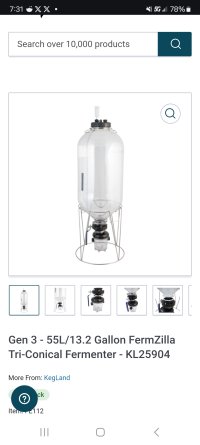I can’t argue with that logic, but I have tried to stay away from the plastic. I have used plastic many times, and still have plastic fermenting buckets around, but a few years ago, I made the effort to go with either stainless steel or glass. Typically, it was glass for my wine and stainless steel for my beer. However, I am seriously considering moving to PET carboys. A review of the glass carboy mishap thread has me reconsidering. I have started doing closed transfers with my wine, and even a tiny bit of pressure on a glass carboy makes me nervous. Weight is an issue too as I age. Further, just the fragile nature of the carboy even in storage is an issue. I have only lost one carboy to breakage, and it was when a small item fell from a shelf above and struck it. Fortunately, it was idle at the time, so I only lost the carboy.
I am usually careful about topping up my carboy until after a few days have passed and the vigorous activity settles a bit. Since I adopted this technique, I have had only one push out through the bubbler. I admit; I rushed it a bit. The downside to this technique is that you can’t really get an accurate OG. I can check my juice, calculate needed additional sugar for full volume, and just assume that is my starting gravity, then just let it roll until it’s done. I have never been disappointed because I couldn’t certify the ABV.
























![Craft A Brew - Safale S-04 Dry Yeast - Fermentis - English Ale Dry Yeast - For English and American Ales and Hard Apple Ciders - Ingredients for Home Brewing - Beer Making Supplies - [1 Pack]](https://m.media-amazon.com/images/I/41fVGNh6JfL._SL500_.jpg)



































